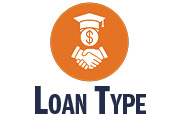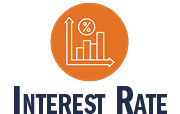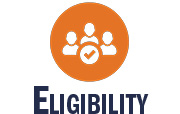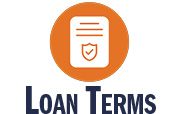If you believe you may need loans to help cover your education costs, you may apply by completing a Free Application for Federal Student Aid (FAFSA). Select the appropriate school or program from the Applying for Aid section to learn about application requirements and instructions.
Make sure to check out Common Application Errors to ensure your application for federal aid can be processed as quickly as possible.
When you apply for financial aid, you are automatically considered for Direct Loans. Graduate students who want to apply for a Direct Graduate PLUS loan will indicate on their University Financial Aid Application (UFAA). You will be prompted to complete the UFAA once you have completed the Free Application for Federal Student Aid (FAFSA).
The University of Virginia participates in the William D. Ford Federal Direct Student Loan Program. This program offers low-interest loans to dependent and independent, undergraduate and graduate students enrolled in school at least half-time (minimum of six credit hours per semester) in a degree-seeking program. Student Financial Services certifies private loans that come from a private lending institution such as a bank or credit union. The University does not offer financial aid for students in any certificate programs.
Entrance counseling is required for all first-time borrowers.
As you consider whether to accept part or all of the loans offered to you, please carefully consider the terms and repayment for each type of loan. The Federal Student Aid Repayment Estimator is an excellent resource.
Summary of Student Loan Types |
||||
| Direct Unsubsidized Loan | 7.05% Fixed |
• Non Need-Based • Must be enrolled at least half-time (6 credit hours) in a degree seeking program • Limits based on year in school - see "Direct Loan Maximums" below |
• Interest accrues from time loan is disbursed and is capitalized when the loan enters repayment • Repayment of principal deferred while enrolled at least half-time in a degree seeking program • Limited deferment provisions • 1.057% origination fee |
• Students are automatically considered with a completed FAFSA • Must sign Master Promissory Note and complete Entrance Counseling at studentaid.gov to receive loan funds |
| Direct Graduate PLUS | 8.05% Fixed |
• Non Need-Based • May borrow up to the Cost of Attendance less other aid • Student must be enrolled at least half-time (6 credit hours) in a degree seeking program |
• Interest begins to accrue upon loan disbursement • Repayment of principal and interest begins within 60 days after the loan is fully disbursed • Repayment may be deferred until after graduation • 4.228% origination fee
|
Must complete: • University Financial Aid Application • The FAFSA application • Sign a Master Promissory Note at studentaid.gov to receive loan funds • Student must pass Department of Education credit check or apply with a credit-worthy endorser |
| Private | Rates Vary |
• Non Need-Based • Students will likely need a credit-worthy co-signer |
• Varies by lender |
• Compare private loan options using UVA FastChoice • Apply Online |
The University of Virginia participates in the Federal Direct Student Loan Program. Under the direct loan program, loans are made by the U.S. Department of Education instead of private lenders. Full disclosure information about Direct Loans is available from the Department of Education or from SFS upon demand.
See more information about the graduate student application process for federal direct loans
Students who do not demonstrate financial need, in whole or in part, are eligible for the Direct Unsubsidized Loan. Graduate students are eligible for the Direct Unsubsidized Loan. Under this program, students are responsible for paying all interest on the loan, including interest that accrues while the student is in school. Repayment of the interest on the unsubsidized loan begins within 60 days after disbursement unless interest capitalization is requested. There is a 1.057% loan origination fee for loans originated October 1, 2022 or later. Students whose parents are unwilling to provide information to complete the FAFSA can apply for unsubsidized loans with the proper supporting documentation.
Master Promissory Note: All borrowers are required to complete a Master Promissory Note (MPN) the first time they borrow a Direct Loan (including the Direct Parent PLUS Loan). The MPN does not show loan amounts because it can serve as the student's promissory note for future years. The amount of the subsidized and unsubsidized loans will be included in the student's financial aid award notification.
Students will receive their Loan Disclosure Statement for each new loan borrowed. The disclosure statements provide information about the types and amounts of loans borrowed, the loan period, and the anticipated disbursement dates. Students should maintain the statements for their records.
Students initially accept, decline, or reduce loan amounts in the Student Information System (SIS). After a loan is accepted in SIS, any other changes require completion of a Financial Aid Change Form Increase or a Financial Aid Change Form Decrease. Note that increases are subject to annual maximums. If you have borrowed more than you need, excess funds must be returned to UVA within 120 days of disbursement. The loan fee will be reduced or eliminated in proportion to the amount of the disbursement returned.
Disbursement Procedure: The financial aid award indicates the total loan amount of the Direct Loan the student is awarded. The net amount disbursed will be the gross amount of the loan less fees.
The Direct Student Loan is normally payable in two disbursements, one-half of the total in each semester. Loan funds cannot be credited to the student's account until approved by the Department of Education and the student has enrolled in sufficient credit hours.
Students will receive an email once their loan has been disbursed to their University Student Account (billing account statement). The disbursement will first pay current term outstanding tuition, fees, and housing and dining charges due to the University of Virginia for the current semester, and the remaining funds will be sent to the student by check to their local address or direct deposit to their own personal bank account. Please note that excess funds cannot be applied to bookstore charges, library fines or parking violation charges.
In the case of an over-award, one or both of the loan disbursements may be reduced or canceled. Similarly, if tuition charges are reduced because of a change in enrollment or additional departmental or non-university awards, one or both of the loan disbursements may need to be adjusted or canceled.
If a student fails to enroll in sufficient credit hours, their loan will be canceled, typically within 30 days of the start of classes.
Entrance Counseling: All first-time borrowers of federal loans must be informed of their borrower obligations before their first loan disbursement can be credited to their University account. Loan entrance counseling information online.
Exit Counseling: It is the student's responsibility to undergo exit counseling before leaving the University or in the event he or she registers for less than half-time basis (minimum six credit hours). Student loan history can be found at http://nslds.ed.gov; use your Federal FSA ID (available at StudentAid.gov) to access the data. It is the student's responsibility to contact Student Financial Services in the event they withdraw from the University or enroll less than half-time (minimum six credit hours) to obtain exit counseling information. Exit counseling information online.
Exit Counseling session covers the following federal student loan types:
William D. Ford Direct Loan (Direct Loan) Program loans
- Direct Subsidized Loans
- Direct Unsubsidized Loans
- Direct PLUS Loans (for graduate/professional students)
Federal Family Education Loan (FFEL) Program loans
- Subsidized Federal Stafford Loans
- Unsubsidized Federal Stafford Loans
- Federal PLUS Loans (for graduate/professional students)
Repayment: Repayment for Direct Loans begins six months after the student leaves school or drops below half-time (six credit hours). Under the Standard Repayment Plan, the student will pay a fixed amount, based on the amount of the loan, every month over a 10-year period. Additional repayment plans are available that decrease the monthly payment, but increase the length of the time over which the balance is paid (and thus increase the total amount paid for most plans). For more information on repayment plans, deferment, and other repayment topics, please see the FSA Guide to Repaying Your Federal Student Loans.
The Direct Loan maximum for graduate students is $20,500 each academic year (unsubsidized only).
The Federal Graduate PLUS loan is made to graduate students enrolled in school at least half-time (minimum of six credit hours per semester) in a degree-seeking program. Graduate students must be U.S. citizens or registered permanent residents to apply for the PLUS loan. Eligibility for the PLUS is not based on demonstrated financial need. Graduate students with adverse credit history or who have filed bankruptcy in the past may be denied the PLUS. It's important to note that the credit check for the Graduate PLUS loan is conducted only after the loan is awarded. In the event of a denial, the student receives a separate email communication from SFS.
Eligible graduate students may borrow up to the cost of attendance less any financial assistance. There is a 4.228% loan origination fee for loans originated October 1, 2022 or later. Repayment begins within 60 days of the full disbursement of the loan, but students may request deferment of payments while enrolled in school at least half-time.
Graduate students must complete the Free Application for Federal Student Aid (FAFSA), www.fafsa.ed.gov, and the University Financial Aid Application.
PLUS Promissory Note: All Graduate student borrowers will be required to sign a Master Promissory Note (MPN). Current regulations allow a graduate student to complete one promissory note (Master Promissory Note) that will be used for future PLUS loans borrowed. The PLUS MPN does not show loan amounts because it can serve as a graduate student's promissory note for future years. The amount of the Graduate PLUS loan eligibility will be included in the most recent financial aid award notification. Please note that every certification of the PLUS loan will result in a credit history inquiry.
Graduate borrowers will receive their PLUS Disclosure Statement for each new loan borrowed. The disclosure statements provide information about the amount of money borrowed, the loan period, and the anticipated disbursement dates. Graduate students should maintain the statements for their records.
Graduate students may decline or reduce the amount of their loan(s) by completing a Financial Aid Change Form Decrease and submitting it to Student Financial Services. To avoid incurring interest charges and loan fees, funds must be returned within 120 days of disbursement. Once a PLUS Loan has been reduced or canceled, a new Financial Aid Increase form must be completed and a new loan processed in order for us to increase the amount of your total PLUS Loan. If 90 days have passed since the last credit check, a new credit check will be conducted.
Disbursement Procedure: The Graduate PLUS is normally payable in two disbursements, one-half of the total in each semester. Loan funds cannot be credited to the student's account until approved by the lender, and the student has enrolled in sufficient credit hours. All graduate students at the University must be enrolled at least half time (at least six credit hours) in a degree-seeking program. Requests for additional Graduate PLUS funds will be processed as a separate loan.
The financial aid award indicates the total loan amount of the Graduate PLUS awarded. The actual amount disbursed will be less due to origination fees.
In the case of an over-award, one or both of the loan disbursements may be reduced or canceled. Similarly, if tuition charges are reduced because of a change in enrollment, departmental or non-university awards, one or both of the disbursements may need to be adjusted or canceled.
Repayment: Under the Graduate PLUS program, repayment must begin within 60 days after full disbursement of the loan. There is no grace period for the Graduate PLUS loan. Deferments may be available. For further information about deferments, please contact your loan servicer. You can find your loan servicer by logging in to http://nslds.ed.gov with your Federal FSA ID.
Many private lending institutions offer credit-based loan programs to students. Students should carefully consider the interest rates, loan fees, and terms of the program before making a selection. Most institutions have an on-line application followed by a credit check. Once the school is notified, the school will certify the loan amount. The student most likely will then be required to complete either an on-line or paper promissory note. Most lenders will require a credit-worthy co-signer who is a United States citizen. Below is some information to consider before selecting a private loan. Once a Private loan has been certified and the student wishes to borrow funds in addition to the amount certified, the student must complete a new loan application with the lender of their choice. It is important to note that we cannot award a private loan until the student has either accepted or declined any other awards that are part of the financial aid award.
Know Your Score—Most private loans are based on the creditworthiness of the borrower and/or co-signer. Students need to know their credit score. The higher the credit score, the better the interest rate. Students can get their credit score at http://www.annualcreditreport.com/. This site has been created by the three crediting bureaus and allows students to get a copy of their free credit report and to buy a copy of their credit score.
LIBOR—London Interbank Offered Rate. The interest rate on some private loans is based on the LIBOR 3-month rate or the LIBOR 1-month rate. The interest rate for the loan is probably variable and will change based on the rate.
Prepayment Fee—Make sure the private loan does not have a prepayment fee for early repayment.
Deferment—Most private loans offer a deferred payment option. If loan payments are deferred, interest will accrue. Our recommendation is to pay the interest if at all possible so that your principal will not increase. Some interest rates for deferment may be different than the repayment interest rate.
Repayment Fee—A few lenders actually charge a fee for going into repayment. Shop around to avoid this fee.
Late Payment—Find out from the lender at what point a payment will be considered late.
Credit-Worthy Borrower—A borrower or co-signer who has sufficient credit to borrow or co-sign for a loan and who is a United States citizen.
Credit-Ready Borrower—A borrower who does not have any credit history but is ready to establish credit.
Repayment—Read the terms and conditions of your loan as some plans require immediate repayment while other provide terms for deferment. Please do not complete a Private loan request more than 90 days from the start of your program begin date: Most lenders will not process a loan that does not disburse within the credit decision expires.
Searching for a Private Lender
There are many ways to pay for higher education, and choosing the right loan requires a good understanding of your options, your responsibilities, and the various details of each lender's loan products. FASTChoice provides you with information about private loans in an easy-to-understand format, to help you determine which private student loan meets your needs. We suggest you research the loans and the lender to find the best interest rate and terms of your loan. Please be aware that when viewing the alternative lender web pages below that you will be leaving the UVA Student Financial Services web site.
Private loans are not backed by the federal government and therefore may have terms and conditions less favorable than federally funded student and parent loans. We encourage all students and parents to first consider and apply for federal student loans before applying for private loans. Because these are private loans, lenders can change the terms and conditions of these loans without notifying UVA Therefore, we suggest you verify this information with any lender on this chart prior to applying for a loan with that company. Please note as well that UVA does not endorse or represent and of the lenders participating in FASTChoice, nor will the University or its representatives be able to provide advice on choosing a lender.





